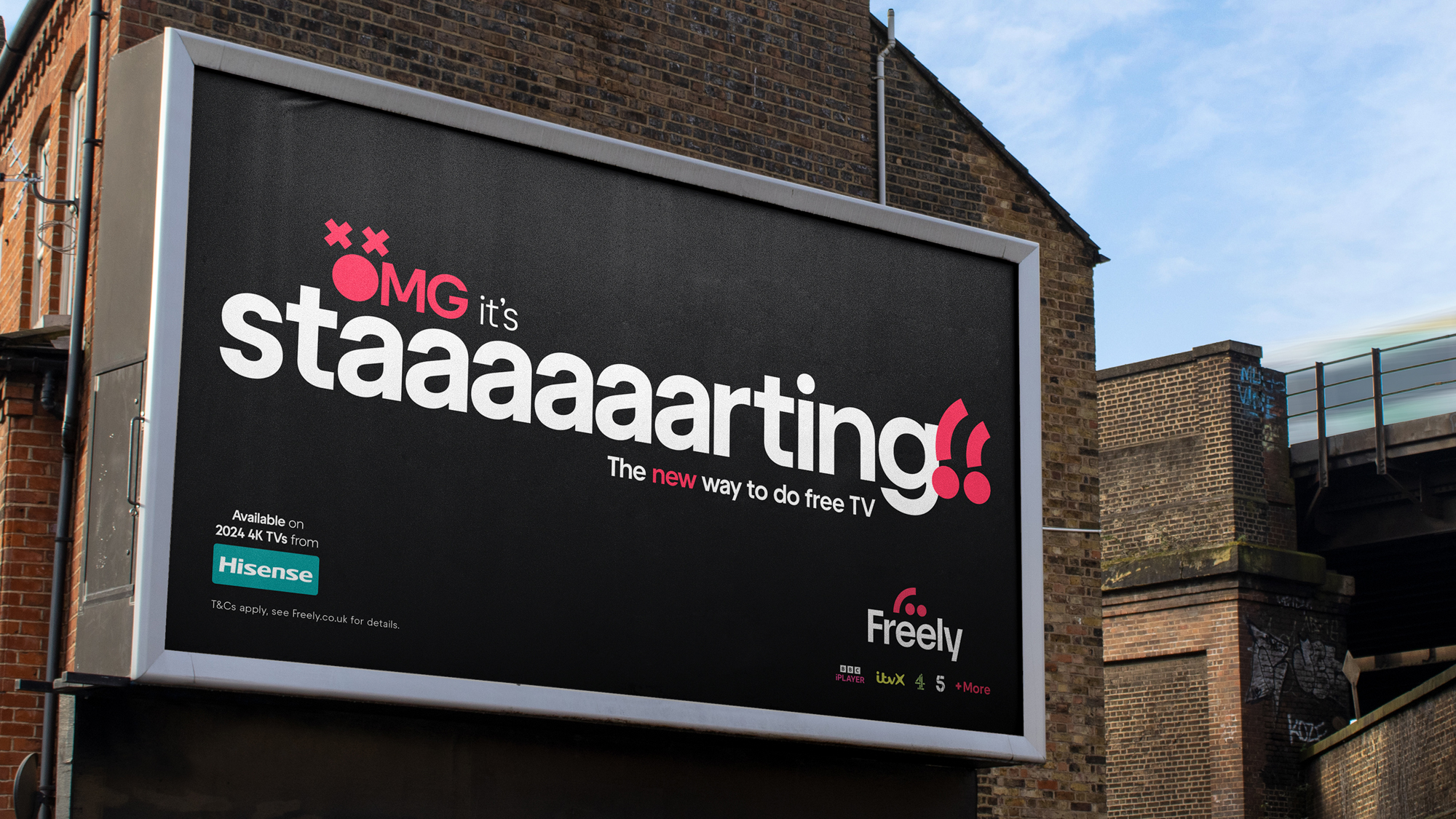Freely utilises the full funnel to build a brand from scratch

The Media Plan
Freely, the streaming service backed by the BBC, ITV, Channel 4 and Channel 5, employed a full-funnel insight-led strategy to build its brand from scratch earlier this year.
The service launched in April and is operated by Everyone TV, giving audiences the ability to stream live TV channels alongside on-demand content for free via smart TVs, without a dish or an aerial.
Chalya Deverill, client partner on the Freely account at Omnicom agency Hearts & Science, told The Media Leader: “Recognising the crucial role free-to-air TV plays in our media plans, we understood the significance of introducing the Freely service to future-proof this medium for the streaming era.”
According to Deverill, the campaign wanted to focus on three core messages: easy to discover, easy to encounter and easy to access.
This means standing out in the competitive internet protocol TV (IPTV) market “at critical moments”, building brand salience to keep Freely top of mind and sustaining that demand, and supporting consumer journeys from looking for information to purchasing a Freely TV.
To hit home these messages, activity used a full-funnel channel mix of TV, broadcaster VOD, OOH, social media and pay per click, with partners that could offer mass reach, smart targeting and rich data for long-term insights.
“We sought to balance the use of impactful formats to maximise reach during key periods, while also maintaining a cost-effective, always-on presence,” Deverill explained.
Acknowledging that this was “a tough balance to strike” with driving conversion through the Freely site, ultimately this strategy was “worth it” for Deverill as it aligned with multiple stakeholder priorities and is set to reach 52.2m adults across the UK.
Aligning with customer pain points
Deverill said the primary challenge for Freely was “launching an entirely new brand to the public from scratch” and the team tackled this by aligning the media strategy with the three biggest pain points they had found.
The first was that a not-for-profit organisation like Freely would not be able to compete on pure spend with the likes of established pay-TV players like Sky and Virgin, which had invested more than £100m into this category since 2019, according to Ad Intel figures.
She said: “We addressed this by focusing on those channels that would land Freely’s distinctive brand assets at the moments of greatest opportunity. We combined market insights with Freely’s first-party data in order to capitalise on the most significant moments. For example, the Euros and the autumn were identified as prime periods for TV purchasing.”
The second insight was that typical IPTV consumers are less likely to purchase a television in the next 12 months and are less interested in free-to-air TV. At the same time, those who love free-to-air TV are more likely to purchase a new TV, but unlikely to be early adopters.
Deverill explained that the team developed a strategy to be effective beyond just the launch year to address this “pain point”, using TV consumption alongside demographics, attitudes, behaviours and broader media habits to identify a custom audience of “pay TV families” — or the 21.9m adults most likely to purchase a Freely TV.
The strategy then focused on this core audience and factored in a “halo audience” most aligned with free-to-air TV who may purchase a Freely TV further down the line.
Another pain point was that Everyone TV had many partners that needed to be considered throughout the decision-making process, from broadcaster shareholders to TV manufacturers and retailers. She continued: “As such, our plan embraced collaboration, as evidenced by the numerous co-branded activations. In this way, we were able to turn a challenge into an opportunity and we leveraged everything each partner could offer.”
Co-branded media and TV roadblocks
On the collaboration front, Hearts & Science co-ordinated an OOH plan with smart TV manufacturer Hisense and a TV roadblock as part of the campaign.
Working with partners on co-branded media was something that Deverill cited as one of the “single elements” she was most proud of.
She explained: “The OOH activation helped break down the complexity of the creative message through sequential messaging and varied formats. We combined this strength with a focus on sites near relevant retail locations where consumers could purchase Freely TVs.”
Freely currently has partnerships with six smart TV manufacturers, so it will be available on new ranges of Toshiba, Sharp, Panasonic and Metz smart TVs, in addition to Bush and Hisense, later this year.

The TV roadblock targeted the 20 biggest stations across ITV and Channel 4. The first spot landed across these stations simultaneously on a Sunday — something that she said “provided the mass scale we need to embed Freely into wider culture”.
According to Google Analytics, this roadblock generated a 68% uplift in traffic compared with the day before and a 117% increase in traffic over the previous Sunday.
What’s next?
The primary objective of the launch campaign was to build brand awareness, which Hearts & Science is gauging primarily through YouGov brand tracking.
At the same time, Freely TV purchases are being monitored with retail and manufacturer partners to determine the traffic the campaign has driven to their sites, while price-promotion campaigns will allow the agency to measure sales uplifts delivered by the activity.
Deverill said “a softer measurement perspective” was paying attention to engagement metrics for Freely’s content and feedback from stakeholders.
She added: “We are still waiting for some of the most significant media activations to go live, but the number of people visiting the Freely website increased by 165% week on week after the media campaign launched on 20 May. We expect to see further significant increases over the course of the year.”
In this phase of the campaign, radio was “dropped” due to budgetary constraints. However, looking further ahead, Deverill said that in year two and beyond the agency hopes to “build out our sonic branding” to the extent that it can consider integrating audio “more broadly” in future work.



